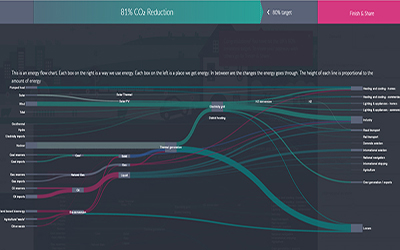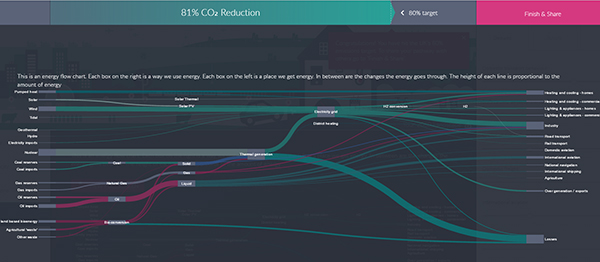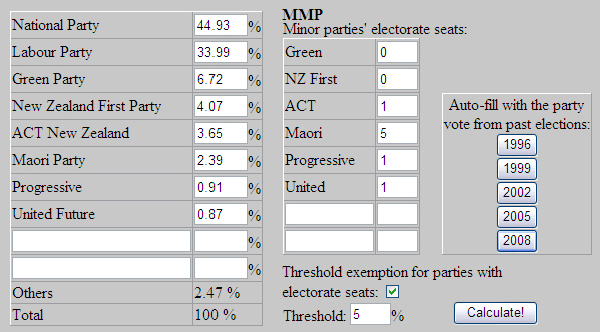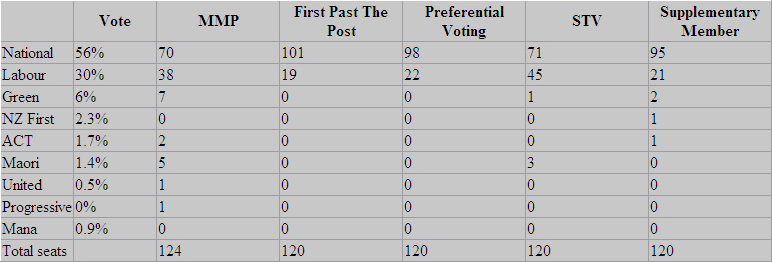Fascination with the beauty of models


Pretty Modelling: The 2050 Pathways Calculator provides six views of the results, including this revealing diagram of energy flows from generation to end use, in Atkins’ pathway for the United Kingdom. No prizes for guessing that any scenario that meets any sort of meaningful emissions reduction target, and doesn’t impose energy poverty—such as this one by Atkins, United Kingdom’s largest engineering consultancy—involves a significant nuclear-power component. diagram Department of Energy and Climate Change
There is nothing put at risk, bar the possible dashing of preconceptions.
Such is the beauty of models; they allow scenarios to be explored virtually, at very little cost—once the software has been written, the model can be run again and again with the only consideration being the time spent by the end user.
The model’s purpose might be to test how green an energy policy is, or if it even keeps the lights from going out. The United Kingdom boasts a beauty, and Aotearoa badly needs an equivalent. Or it can be to explore what combination of improvements to town’s water reticulation network would be most cost-effective. There’s a strategic section of water main in Helensville with the editor’s name on it, which considerably increases the likelihood that a blaze at the Kaipara College could be extinguished, dating from his brief career as a council-employed water modeller.
Or the purpose of the model may be to allow voters to see what they might gain or lose from voting, in November, to ditch mixed member proportional. Dr Geoffrey Pritchard and Dr Mark C Wilson, of the Centre for Mathematical Social Science at the University of Auckland, have built such a model, the 2011 Referendum Simulator:

Pretty Comprehensive: At the push of a button, the 2011 Referendum Simulator can be populated with the voting percentages of any of the mixed member proportional elections. interface montage Mahurangi Magazine, from 2011 Referendum Simulator interface, University of Auckland
We aim to allow voters to compare the proposed referendum options in a quantitative way, by allowing them to compute quickly, for a given polling scenario, the party seat distribution in Parliament under each system.
The simulator allows Aotearoa’s present fully proportional system to be compared with the referendum options of first-past-the-post, preferential voting, single transferable vote and supplementary member. Users of the simulator may wish note particularly the first-past-the-post and single transferable voting outcomes, as current polling has these on 40% and 17% respectively—the only options to reach double digits. Garnering just 3%, Don Brash’s favourite, supplementary member, is dead in the water. However, under that system, and based on the latest TVNZ Colmar Brunton polling, the simulator indicates that Act would pick up one seat, as opposed to none under any of the other three options.
Staying with that polling result, the simulator graphically displays the grossly distorting effects of non-proportional systems: National 101 to Labour 19 under first-past-the-post, and National 99 to Labour 22 under so-called Preferential Voting. Only under single transferable voting, which unlike Preferential Voting, is a fully preferential voting system, does the result start to look proportional. However, with but one seat for the Greens, any proportionality is strictly reserved for the two main parties.

Not Pretty: Although the 2011 Referendum Simulator interface is decidedly plain, it is the disproportionality of the alternatives to mixed member proportional that is really ugly. The results displayed here are based on the latest TVNZ Colmar Brunton polling, and assume the Māori Party wins five electorate seats and Act one. Table University of Auckland
In the words of Pritchard and Wilson that accompany each batch of simulated results:
What would this mean for politics and government? We don’t presume to say, but you may have some ideas.
Unsurprisingly, what the simulator doesn’t do is to model the outcome of a tuned-up mixed member proportional system. By the simple measure of incorporating preferential voting, the number of list members needed to acheive strict proportionality could be nearly halved. And by deploying Stephen Todd’s graduated threshold, the insidious coattails provision could be expunged.
A beautiful model for a world-class electoral system.
